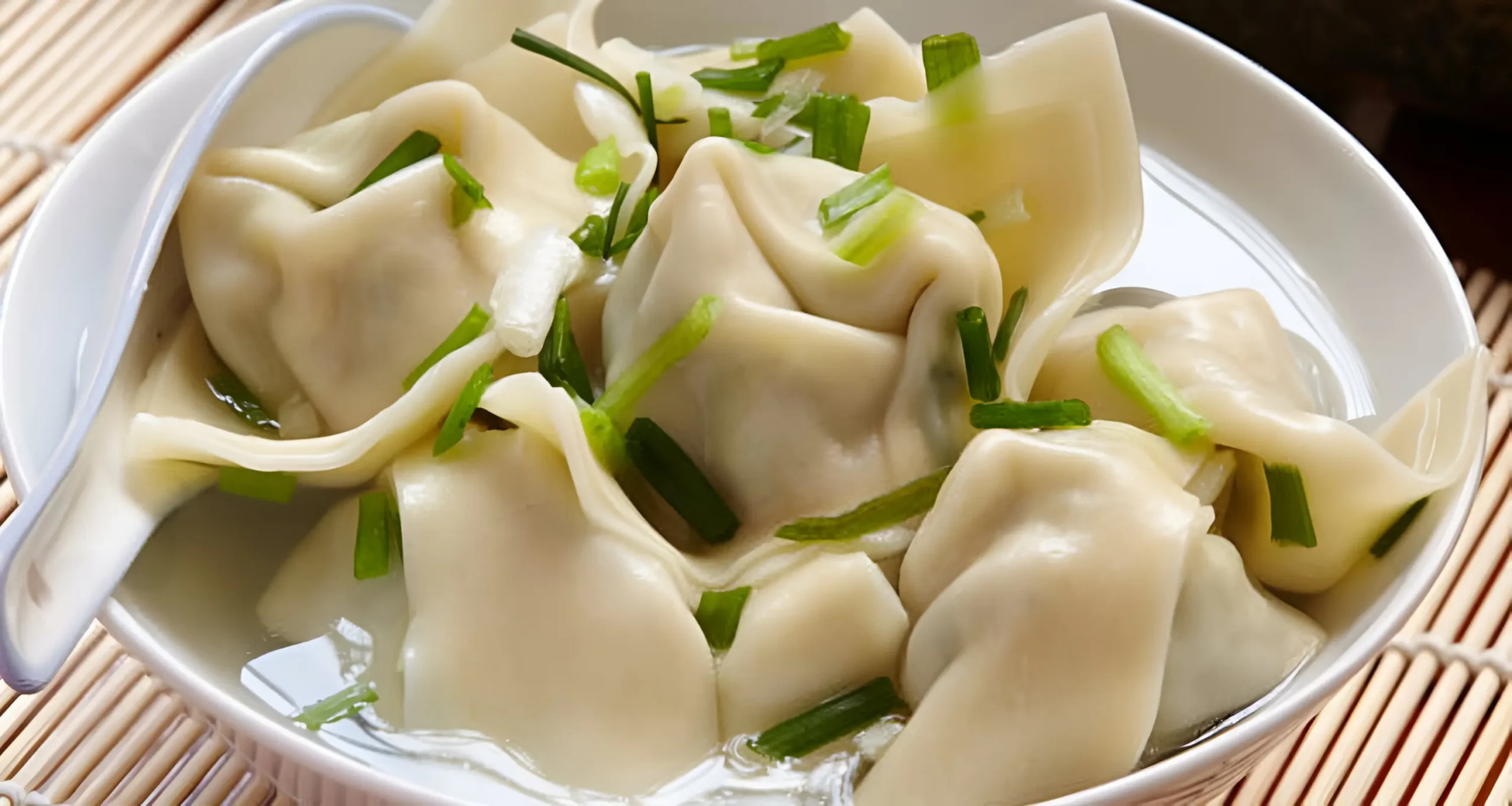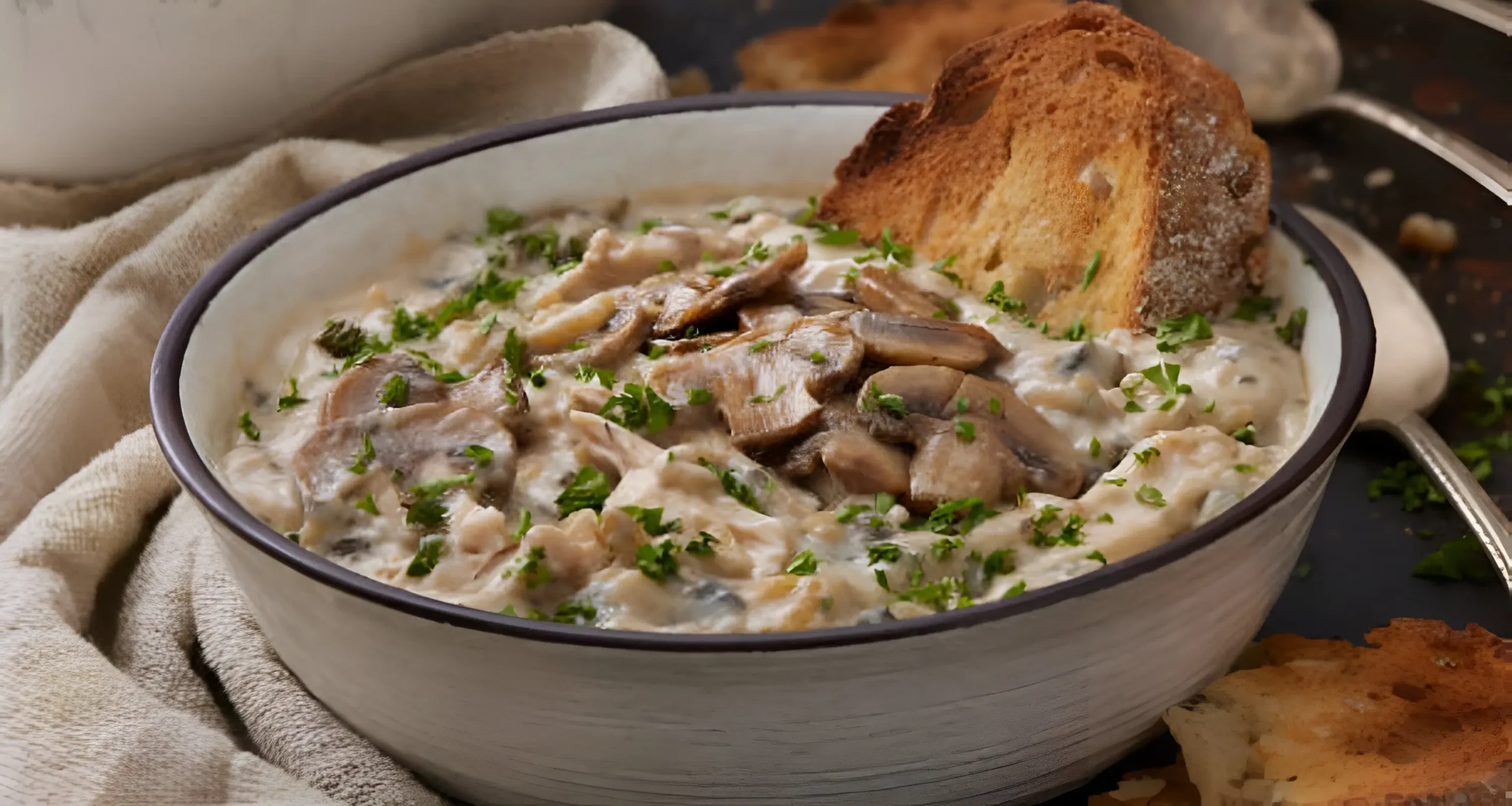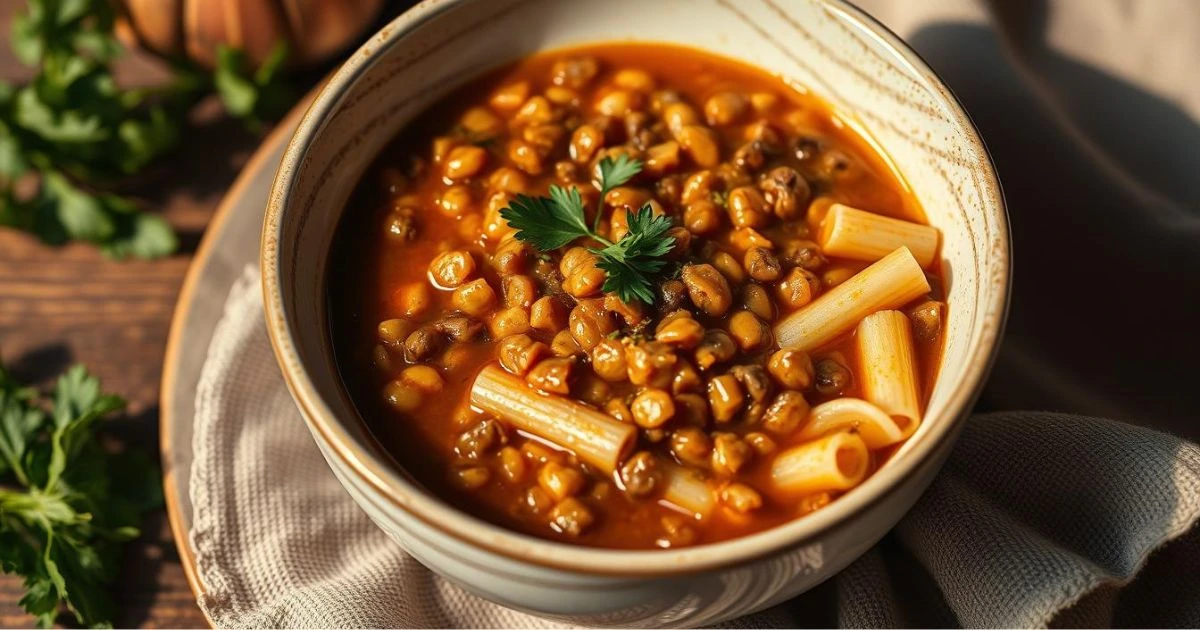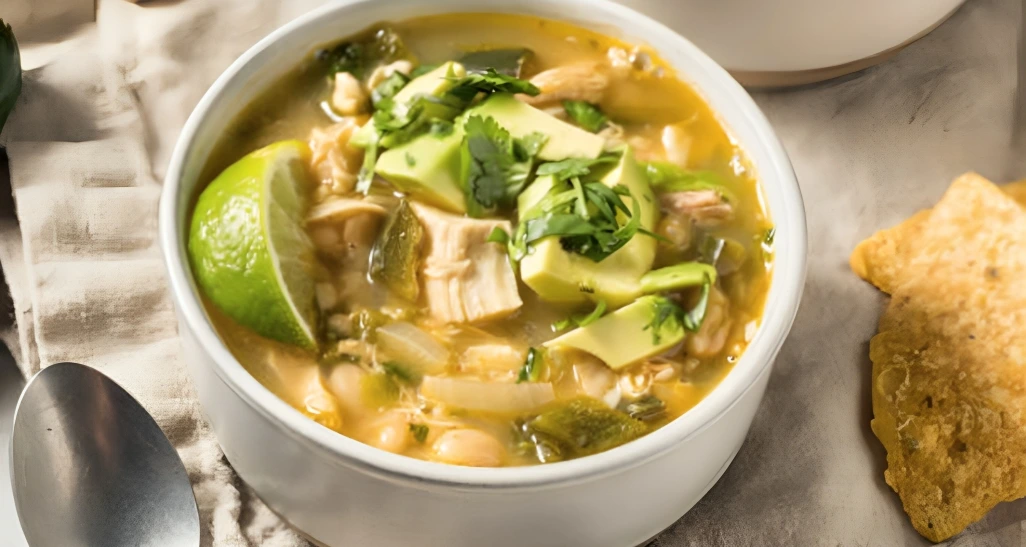Chicken Noodle Soup 5 Secrets to Make It Extra Flavorful

There are nights when you come home feeling drained. All you want is a bowl that feels like a hug. I remember the first time I made a comforting Chicken Noodle Soup from scratch. The aroma filled the house, and everyone paused to enjoy that first spoonful.
This guide is for you. You deserve a delicious bowl, whether for family, after work, or when you’re not feeling well.
This guide will teach you five secrets to make your homemade chicken noodle soup extra flavorful. You’ll learn how to make a rich stock, add layers of seasoning and umami, and choose the right noodles. You’ll also learn how to cook vegetables to bring out their flavor and add finishing touches that make every bowl special.
The tips work for stovetop, slow cooker, and Instant Pot. You’ll find healthy swaps and tips for adding vegetables to your soup.
Expect clear instructions, ingredient swaps for special diets, and simple techniques for weeknights. Here’s what you’ll learn: why mastering the recipe is important, stock basics, seasoning, noodle and vegetable techniques, slow cooker and Instant Pot tips, healthy swaps, finishing touches, common mistakes, and a conclusion.
Key Takeaways
- Five focused secrets will turn an ordinary bowl into a memorable Chicken Noodle Soup.
- Start with a robust stock to build lasting flavor for homemade chicken noodle soup recipe.
- Layer seasonings and umami, and handle noodles and vegetables with care for best texture.
- Methods adapt to slow cooker and Instant Pot for busy cooks and weeknight dinners.
- Healthy swaps let you enjoy chicken noodle soup with vegetables without losing depth.
Why mastering homemade chicken noodle soup recipe matters for flavor
Making homemade chicken noodle soup lets you control the taste and texture. By using basic cooking techniques like slow simmering and careful seasoning, you can elevate a simple Chicken Noodle Soup into a rich experience. Even minor adjustments can have a significant impact.
Comfort food with culinary technique
Chicken Noodle Soup is comforting, but technique adds depth. Start by softening onion, celery, and carrot. This releases sugars and savory compounds.
Browning meat or roasted bones before simmering adds caramel notes and richer color. Control the heat and time to extract flavors without clouding the broth. Gentle simmering gives you clarity and body.
Health and quality control when you make it at home
Making Chicken Noodle Soup at home lets you manage sodium, fat, and ingredient origin. You can opt for organic or pasture-raised chicken and fresh, locally sourced vegetables. This reduces preservatives and stabilizers found in canned options.
Trim fat, use low-sodium stock, or reserve fat for finishing. This way, you control richness. This freedom supports dietary needs and helps you craft a cleaner, more nutritious bowl than many restaurant or packaged versions.
How flavor depth transforms a simple bowl into a memorable meal
Depth comes from concentrated stock, umami elements, acid, and fresh herbs at the end. A squeeze of lemon or a sprinkle of parsley adds a fresh, bright note to the richness. Parmesan rind, mushrooms, or a tiny splash of soy brings savory complexity without heaviness.
Texture matters. Tender noodles, crisp-tender vegetables, and succulent chicken create contrast that makes each spoonful satisfying. You can get that same complexity in a slow cooker chicken noodle soup easy by adapting timing and finishing steps.
| Technique | Why it matters | Quick tip |
|---|---|---|
| Roast or brown bones | Adds caramelized flavor and deeper color to stock | Roast at 425°F for 30–40 minutes before simmering |
| Use aromatics | Builds savory base and balances sweetness | Sweat onion, celery, carrot for 8–10 minutes; avoid burning |
| Control salt timing | Prevents over-salting as broth reduces | Season lightly early; adjust at the end |
| Add acid and herbs at finish | Brightens flavors and lifts richness | Finish with lemon, vinegar, or fresh parsley |
| Adapt for appliances | Keeps flavor when scaling recipes or saving time | Use low-and-slow for slow cooker; high-heat, short time for Instant Pot |
Start with a robust homemade stock for maximum taste
Your stock is the foundation of every bowl. A rich, gelatinous base adds body and flavor. Spend time on this step for a better Chicken Noodle Soup.
Selecting bones, dark meat, or a whole chicken for a more flavorful broth
Raw chicken backs, necks, and carcasses are best for deep flavor. They break down into gelatin, making the Chicken Noodle Soup silky. Dark meat adds fat and depth, unlike lean breast meat.
Using a rotisserie chicken or carcass saves time, though it alters the flavor. Roasting bones first enhances color and flavor.
Vegetable aromatics that build savory complexity
Start with onion, celery, and carrot for a sweet base. These three are key to your stock’s aroma.
Leek, parsnip, fennel, and garlic add layers of flavor. A tomato boosts acidity and umami. Use a bouquet garni for easy removal.
Simmering time and temperature tips for clear, flavored stock
Simmer gently, not hard, to keep the broth clear. Skim scum early to avoid cloudiness.
Simmer times vary. Use 1.5–2 hours for a whole chicken. For bones alone, aim for 3–4 hours.
Instant Pots work in 30–45 minutes. Slow cookers need low and slow for the best gelatin.
Don’t over-salt while reducing. Stock gets more concentrated as it cooks. Cool, skim fat, and freeze for later use.
Layer flavors with seasoning strategy and umami boosters
Start with a clear plan for seasoning. Each part of your homemade chicken noodle soup should add depth without overpowering the broth. Season lightly at the start, layer in umami gradually, and finish with a splash of acid and fresh herbs.
When to salt: during stock vs. at the end
Add a modest pinch of salt when starting the stock. This helps bring out flavors from bones and vegetables. Seasoning lightly at the beginning allows you to reduce the liquid and concentrate flavors without over-salting.
If you use store-bought broth that tastes salty, dilute it with water or unsalted homemade stock, then adjust seasoning near the end. Taste after noodles and vegetables join the pot, then add small increments of salt until balanced.
Incorporating umami-rich ingredients such as mushrooms, soy sauce, or a Parmesan rind
Use dried shiitake or porcini rehydrated in hot water; add both the soaked mushrooms and a little of their soaking liquid for an earthy boost. A Parmesan rind simmered in the pot gives rich, savory body; remove it before serving.
Splash in low-sodium soy sauce or tamari for depth without overpowering chicken flavor. Dissolve a small spoonful of miso off heat for rounded umami, or brown a bit of tomato paste in oil to add caramelized complexity. Use each booster lightly so the chicken remains central.
Final touches: a splash of acid, fresh herbs, and a hint of heat
Brighten the Chicken Noodle Soup with a few teaspoons of fresh lemon juice, sherry vinegar, or white wine vinegar just before serving. Fresh herbs like parsley, dill, chives, or thyme should be chopped and stirred in during the last five minutes to preserve aroma.
Add gentle heat with a pinch of crushed red pepper, a drizzle of chili oil, or a few turns of freshly ground black pepper. Taste as you go and adjust; this approach helps you create a balanced, flavorful chicken noodle soup that works whether you follow a classic homemade chicken noodle soup recipe or opt for a healthier chicken noodle soup without cream.
Texture matters: selecting and cooking noodles perfectly
Getting the noodle texture right can make your chicken noodle soup unforgettable. The choice of noodle and cooking method affects the soup’s texture, clarity, and reheating performance. Follow these tips to pick the right noodle for your Chicken Noodle Soup and keep vegetables vibrant.
Egg noodles offer a classic, smooth texture. Fresh egg noodles are tender and luxurious. Dried wide or medium egg noodles maintain their texture well, making them ideal for large batches and leftovers.
Thin pasta, like capellini or broken spaghetti, makes a light, easy-to-swallow Chicken Noodle Soup. Small shapes, such as ditalini or pastina, are great for kids and ensure even mouthfuls.
To avoid soggy noodles, use one of two methods.
- Cook noodles fully in salted boiling water, then drain and add to bowls. This keeps the broth clear and the noodles perfect.
- Cook noodles in the simmering soup near the end. For dried shapes, cook 8–10 minutes before serving. For fresh noodles, cook 2–4 minutes before serving.
For leftovers, store noodles and broth separately. Reheat by adding noodles to hot broth. This keeps the noodles fresh for later meals.
For gluten-free soup, try brown rice, chickpea, or quinoa pasta. These options can become mushy if cooked too long.
Cook gluten-free pastas briefly and test often. Consider boiling them separately. Rinse them briefly to stop overcooking. Save some pasta water to adjust the broth’s consistency when adding noodles.
Spiralized veggies like zucchini or carrot are great for a lighter soup. Add them toward the end to maintain their firmness and vibrant color. These changes let you customize your soup for different diets.
Maximize vegetable flavor without losing nutrition
Vegetables are key in a tasty chicken noodle soup. By choosing wisely and timing well, you keep the Chicken Noodle Soup colorful, crunchy, and full of vitamins. This makes your homemade chicken noodle soup both healthy and memorable.
Vegetable choices
Carrots, celery, and yellow onion are great for a classic flavor. Leeks, parsnips, or fennel add a nice aroma. Sweet potato adds sweetness. Green beans, peas, and baby spinach add color and freshness when added late.
Sautéing vs. adding raw
Start by cooking aromatics in a bit of oil or butter. This brings out their natural sweetness. Onions and celery should cook for 5–8 minutes until they’re soft.
Add harder veggies like carrots, parsnips, and fennel next. This lets them soften a bit before you add liquid.
Save tender veggies for later. Peas and baby spinach should be added in the last 1–2 minutes. This helps keep them firm and prevents sogginess.
Preserving color and nutrients
Simmer delicate veggies for shorter times and add them after the stock has reduced. For a bright green, blanch and shock greens in ice water before adding them briefly to the hot Chicken Noodle Soup.
Roasting some veggies ahead of time can enhance flavor. Use raw carrot or celery as a garnish for crunch and color when serving your healthy chicken noodle soup without cream.
| Vegetable | Role | When to Add | Texture Tip |
|---|---|---|---|
| Carrots | Sweet base, color | With stock after aromatics | Sauté then simmer 15–20 minutes |
| Celery | Savory backbone | With aromatics | Slice thin for tenderness |
| Yellow onion / Leek | Umami and aroma | Sauté first 5–8 minutes | Cook until translucent, not brown |
| Parsnip / Fennel | Earthy, aromatic lift | After aromatics, before stock | Roast for depth or simmer for mildness |
| Sweet potato | Sweetness and body | After stock added | Cut uniform to avoid mush |
| Green beans | Fresh bite and color | Last 5–7 minutes | Blanch for bright color |
| Peas | Sweet pop and color | Last 1–2 minutes | Add frozen straight to pot |
| Baby spinach | Delicate green, nutrients | Stir in at end | Wilts instantly, no long simmer |
Technique tweaks for slow cooker chicken noodle soup easy success

Using a slow cooker for homemade chicken noodle soup is a game-changer. It offers convenience and deep flavors. Start with cold water to extract flavors slowly and evenly.
Applying the five secrets to a slow cooker approach
Start with roasted or seared bones and veggies. A quick roast at 425°F adds a rich flavor. Add these, onion, carrot, celery, and cold water to the slow cooker on low for 6–8 hours.
Enhance the broth by adding umami-rich ingredients such as a Parmesan rind or dried shiitake mushrooms. Strain the liquid for clarity before finishing the soup.
Timing and when to add noodles and delicate herbs
To prevent mushy noodles, stir in dried pasta during the final 30–45 minutes of cooking. Fresh egg noodles need 10–20 minutes. If you prefer to keep noodles separate, cook them and hold them until serving.
Delicate herbs like parsley, dill, and chives lose brightness with long heat. Stir them into the pot in the final 5–10 minutes or sprinkle fresh on each bowl right before you serve your chicken noodle soup with vegetables.
Tips to concentrate flavor in low-and-slow cooking
If the slow-cooked broth tastes weak, remove a cup or two and reduce it on the stovetop to concentrate flavor. Stir the reduction back into the pot to boost depth without overcooking ingredients.
For richer taste, add a Parmesan rind, a handful of dried mushrooms, or a splash of low-sodium soy sauce during the slow cook. Searing chicken pieces or roasting bones first creates Maillard flavors that carry through the soup.
Handle cooked chicken safely: check internal temperature at 165°F and remove a whole bird to shred before returning meat to the strained broth. Chill briefly to skim excess fat if you prefer a lighter bowl.
| Step | When to Do It | Why It Helps |
|---|---|---|
| Roast bones and vegetables | Before slow cooking | Deepens flavor with caramelization and adds color |
| Start on low with cold water | 0 hours (start of cook) | Gentle extraction of collagen and aromatics for a rich broth |
| Add umami boosters | At start or halfway | Builds savory depth without extra salt |
| Add dried noodles | Last 30–45 minutes | Prevents mushy texture and maintains bite |
| Add fresh noodles | Last 10–20 minutes | Preserves tender chew and prevents overcooking |
| Stir in delicate herbs | Final 5–10 minutes or at serving | Preserves aroma and bright color |
| Reduce broth on stovetop | After slow cook, if needed | Concentrates flavor without long recook in the cooker |
| Strain and chill | After cooking, before finishing | Clarifies broth and allows fat removal for a cleaner bowl |
Speedy methods: creamy chicken noodle soup instant pot adaptations
The Instant Pot makes a quick, tasty bowl. It cooks bones and aromatics fast, pulling out collagen and depth in 30–45 minutes. This makes a richer broth than most store-bought ones, perfect for a homemade chicken noodle soup.
Using store-bought broth saves time on busy nights. You might need to adjust the salt and add some extra umami. Start by sautéing onions, carrots, and celery on the sauté setting. Be sure to deglaze thoroughly to prevent burning and build rich layers of flavor.
Pressure-cooking stock vs. using store-bought broth
Pressure-cooking makes the broth thick and silky. As the broth cools, the collagen transforms into gelatin, naturally thickening it. Store-bought broth is quicker but might lack body. Adding a small piece of cooked chicken skin or some reduced stock can help.
How to get creamy texture without heavy cream in the Instant Pot
Puree some cooked veggies into the hot broth for creaminess. Carrots, potato, or parsnip work well, keeping the soup light and savory. This way, you get a creamy texture without using heavy cream.
For a tangy twist, stir in Greek yogurt after removing the soup from heat. You can also add a beurre manié or a cornstarch slurry to thicken. Soaked cashews or pureed white beans are great for a dairy-free option that stays smooth.
Quick-release vs. natural release effects on broth clarity
Quick-release can cloud the broth by stirring up solids. Natural release over 10–15 minutes keeps it clear. Opt for a natural release for a clear broth, or use quick release if you need to add noodles quickly and strain afterward.
Some tips: sauté aromatics first for better flavor. Deglaze well to avoid burn warnings. Cook noodles separately or on the sauté setting to avoid mushiness. These tips help you make a creamy chicken noodle soup in the Instant Pot that’s as comforting as homemade, but healthier.
Healthy chicken noodle soup without cream: flavor-preserving swaps

You can keep a rich mouthfeel without heavy cream. This way, you preserve the bright, savory notes you love. Try techniques that build body from ingredients you already use in a homemade chicken noodle soup recipe. These swaps help you serve a bowl that’s lighter but satisfying.
Using starchy cooking water, blended vegetables, or yogurt alternatives
Save pasta or noodle cooking water for a silky texture. The starch makes the broth cling to noodles and vegetables without adding fat.
Purée cooked carrots, potato, or cauliflower into the broth for natural creaminess and extra vitamins. Stir the purée in until smooth, then warm gently to meld flavors.
Off-heat, whisk in plain Greek yogurt or skyr for tang and protein. For dairy-free bowls, blend white beans or soaked cashews into a paste and fold it in to thicken the soup without altering the savory profile.
Reducing sodium and fat while keeping savory depth
Start with low-sodium broth and hold back on added salt during stock making. Use concentrated umami boosters to make up flavor without sodium overload.
Options include a Parmesan rind simmered in the pot, dried porcini soaked and chopped, roasted garlic, a touch of tomato paste, or a small splash of low-sodium soy sauce or Worcestershire.
To trim fat, chill the stock and skim the solidified fat or use a fat separator while retaining mouthfeel from reduced stock solids and vegetable purées.
Protein and calorie considerations for a balanced bowl
Add shredded chicken for a boost of lean protein; using skinless chicken breast reduces fat, while dark meat enhances richness and increases calories per serving. Choose portions to meet your goals.
Boost protein and fiber with white beans or cooked quinoa. These keep the bowl filling and help control caloric density when you reduce noodles.
If you watch carbs, swap noodles for spiralized vegetables or use a small amount of whole-grain pasta. For low-sodium diets, enhance flavor with fresh herbs and a splash of lemon juice instead of adding more salt.
| Swap | Effect on Flavor | Nutrition Impact | When to Use |
|---|---|---|---|
| Starchy noodle water | Silky, cohesive broth that clings to ingredients | No added calories, reduces need for cream | Finish before serving; add a few ladles gradually |
| Puréed carrots/potato/cauliflower | Natural sweetness and body with a neutral profile | Adds fiber, vitamins; moderate calories | Blend cooked vegetables and stir into hot broth |
| Greek yogurt or skyr | Tangy creaminess and smoother texture | High protein; moderate fat depending on variety | Whisk in off heat to prevent curdling |
| White beans or cashew paste (vegan) | Rich mouthfeel with subtle, neutral flavor | Adds protein and healthy fats; increases calories | Blend with cooking liquid and fold in gradually |
| Parmesan rind, dried mushrooms, roasted garlic | Concentrated umami depth without extra salt | Minimal calories; boosts perceived richness | Add during simmering, remove rind before serving |
| White beans, quinoa for extra protein | Heartier texture and satiety | Increases protein and fiber; controls calorie density | Add cooked beans or quinoa when reheating the soup |
Finishing touches that amplify aroma and presentation
Adding a few simple touches can make your chicken noodle soup unforgettable. These small steps enhance the aroma, texture, and look without changing the soup’s core. They help your homemade chicken noodle soup recipe shine.
Fresh herbs, citrus zest, and green onion garnish techniques
Chop flat-leaf parsley for a fresh, herbal taste. Use dill or chives for a light, tender flavor. Cilantro adds a bold twist, while green onions add a mild crunch.
Finish with a bit of lemon or lime zest. A squeeze of lemon juice brightens the broth and brings out the flavors just before serving.
Texture contrasts: crispy toppings and toasted seeds
Add crunch to balance soft noodles and chicken. Consider adding crispy fried shallots, garlic croutons, or baked Parmesan crisps. Thin prosciutto strips or pan-fried bacon add savory crunch and umami.
Toast pepitas or sunflower seeds in a skillet for a few minutes until fragrant. Sprinkle them lightly to add texture without overwhelming the soup.
Serving suggestions and bowl presentation to enhance perceived flavor
Warm bowls to keep the soup hot longer. Place noodles and chicken in the center, then pour broth around them. Add garnishes last for color and aroma.
Pair the soup with crusty bread, buttered toast, or a simple salad for a complete meal. Good plating and a strong aroma make the soup seem richer and more complex.
Practical garnish combos
Try lemon + parsley for a bright, fresh taste, or dill + yogurt for a Scandinavian flair. Chili oil + chives add a modern kick. These combinations work well with many homemade chicken noodle soup recipes.
| Garnish | Effect | Quick method |
|---|---|---|
| Flat-leaf parsley + lemon zest | Brightens broth and freshens aroma | Chop parsley fine; zest lemon over bowl |
| Dill + yogurt | Creates creamy, tangy Scandinavian note | Whisk small spoon of yogurt with dill; dollop |
| Fried shallots or garlic croutons | Adds crisp texture and toasty flavor | Pan-fry thin shallots or toast cubed bread |
| Toasted pepitas or sunflower seeds | Nutty crunch without overpowering soup | Toast seeds dry in skillet until fragrant |
| Chili oil + chives | Spicy, modern finish with onion brightness | Drizzle oil; sprinkle sliced chives last |
Troubleshooting common flavor pitfalls and easy fixes
Even the best chicken noodle soup can face problems. Use these quick fixes to fix broth, texture, and balance without starting over. Taste often and make small changes to avoid overdoing it.
Flat-tasting broth? Try concentrated reductions or quick umami boosters.
If your broth tastes thin, simmer it uncovered to intensify the flavors. Skim fat for clarity. Add umami boosters like a Parmesan rind, mushroom soaking liquid, or a teaspoon of miso or low-sodium soy sauce to add savory layers.
Sear extra aromatics like onions, carrots, and celery in a hot pan. Then blend or stir them into the stock for added complexity. Add a splash of lemon juice or a teaspoon of vinegar and fresh herbs just before serving.
Soggy ingredients and grainy textures: how to rescue the soup
Soggy noodles ruin the soup’s feel. Remove them and add freshly cooked noodles to each bowl. For mushy vegetables, add fresh diced carrots, celery, or peas and cook briefly until tender-crisp.
Grainy dairy additions like yogurt can curdle if added to boiling soup. Take the pot off heat, temper yogurt by whisking in a ladle of hot broth, or swap in a blended vegetable puree or a cornstarch slurry to recreate creaminess without graininess.
Too much salt in your broth? Use dilution or starch-based methods to restore balance.
When salt is too high, dilute with low-sodium broth or plain water one cup at a time while tasting. Add peeled raw potato slices and simmer 10–15 minutes to absorb excess salt, then remove the potatoes. Unsalted cooked rice or plain cooked noodles will also take up salt when left to sit in the broth.
Correct gradually to avoid flattening the flavor. Once balanced, finish with fresh herbs, acid, and a drizzle of olive oil to restore brightness and mouthfeel.
Prevention tips to keep your pot on track
- Taste at multiple stages and under-salt early so you can finish seasoning later.
- Cook noodles separately for reliable texture, even with homemade chicken noodle soup recipes or Instant Pot methods.
- Keep delicate finishes—fresh herbs, yogurt, or citrus—out of long heat to preserve their lift.
- When using a creamy chicken noodle soup instant pot approach, aim for low agitation on dairy and temper gently to prevent graininess.
Conclusion
You now know the five key secrets to make Chicken Noodle Soup better. Start with a strong stock, add layers of umami, and season well. Choose the right noodles and cook them just right. Add lots of veggies for flavor and keep them healthy.
Finish with fresh touches and different textures. These steps form the basis of a delicious homemade chicken noodle soup recipe. You can make it again and again, improving it each time.
These tips work for any cooking method: stovetop, slow cooker, or instant pot. Swap ingredients like gluten-free noodles and low-sodium broth to fit dietary needs. Small changes, like roasting bones or adding a Parmesan rind, boost flavor without extra work.
For quick improvements, cook noodles ahead of time and add lemon and herbs at the end. Try one umami booster at a time. Keep a batch of concentrated stock ready for fast soup making. With a few tweaks, your soup will be richer, brighter, and more comforting every time.
FAQ
What’s the single most important secret to making your homemade chicken noodle soup recipe taste exceptional?
Start with a rich, flavorful stock. Use bones or a whole chicken to create a broth rich in natural gelatin. Roast the bones or vegetables first for extra flavor.Skim off scum early and don’t over-salt. This way, you can reduce the broth without making it too salty.
Can you make creamy chicken noodle soup instant pot-style without heavy cream?
Yes, you can. Use the Instant Pot to extract collagen from bones. This takes 30–45 minutes on high pressure.Then, make the soup creamy by pureeing some cooked vegetables. Blend in plain Greek yogurt off heat, or use a soaked-cashew puree. A beurre manié or cornstarch slurry also thickens without cream.For dairy-free options, white beans or blended cashews work well.
How do you prevent soggy noodles in chicken noodle soup with vegetables?
Cook noodles separately in salted boiling water. Add them to bowls at serving, or add dried noodles to the simmering soup for the last 8–10 minutes. Fresh noodles cook in 2–4 minutes.For leftovers, always store noodles separately to avoid mushy texture.
What are quick umami boosters when the broth tastes flat?
Add a Parmesan rind during simmering. Rehydrated dried shiitake or porcini plus their soaking liquid also work well. A small splash of low-sodium soy sauce or tamari, or a teaspoon of miso dissolved off heat, can help.Finish with a bright acid (lemon or sherry vinegar) and fresh herbs to lift the flavor.
How do you adapt the recipe for a healthy chicken noodle soup without cream?
Replace heavy cream with starchy pasta water, pureed vegetables, or Greek yogurt (stirred in off heat). Use low-sodium broth and skim excess fat after chilling.Boost flavor with roasted aromatics, tomato paste, Parmesan rind, or mushrooms instead of extra salt and fat.
What noodles work best and what about gluten-free options?
Classic egg noodles (fresh or dried) give the best mouthfeel. Small shapes like ditalini or pastina are great for kids.For gluten-free, use brown rice, quinoa, or chickpea pastas but cook them carefully—they can turn mushy. Use spiralized vegetables for a low-carb option and add them near the end.
How should you time vegetables so they keep color and nutrients?
Sauté aromatics (onion, celery, carrot) 5–8 minutes to build flavor. Add hard vegetables earlier and tender ones like peas or spinach in the last 1–2 minutes.For bright greens, blanch and shock or add fresh just before serving to preserve color and nutrients.
What tweaks make slow cooker chicken noodle soup easy and flavorful?
Start with raw bones or a whole chicken, aromatics, and cold water on low for 6–8 hours. Roast bones or sear chicken first if you can.Add dried noodles in the last 30–45 minutes and delicate herbs in the final 5–10 minutes. If broth seems weak, reduce a portion on the stovetop or add umami boosters.
Instant Pot: quick-release or natural release for the clearest stock?
Natural release (10–15 minutes) yields a clearer broth because it allows solids to settle. Quick release can agitate particles and cloud the stock, but use quick release if you need to add noodles immediately—then strain if clarity matters.
My soup turned out too salty—how do I fix it?
Dilute with low-sodium broth or water, add peeled raw potato slices to absorb salt (remove after 10–15 minutes), or add unsalted cooked starches such as rice or extra noodles. Correct gradually and taste as you go to avoid over-dilution.
How can you add textural contrast and garnish for better presentation?
Finish bowls with fresh herbs (parsley, dill, chives), a squeeze or zest of lemon, and crunchy toppings like garlic croutons, toasted pepitas, fried shallots, or crispy prosciutto. Warm bowls and ladle noodles and chicken first, broth second, then garnish to maximize aroma and perceived flavor.
Any tips to make the soup suitable for meal prep and leftovers?
Cook noodles separately and store in their own container. Keep broth and shredded chicken chilled in another container. Reheat broth, add freshly cooked or reheated noodles, and finish with fresh herbs to preserve texture and flavor.Freeze concentrated stock in portions for quick future batches.
Add a Dash of Your Thoughts!
There are no reviews yet. Be the first one to write one.






